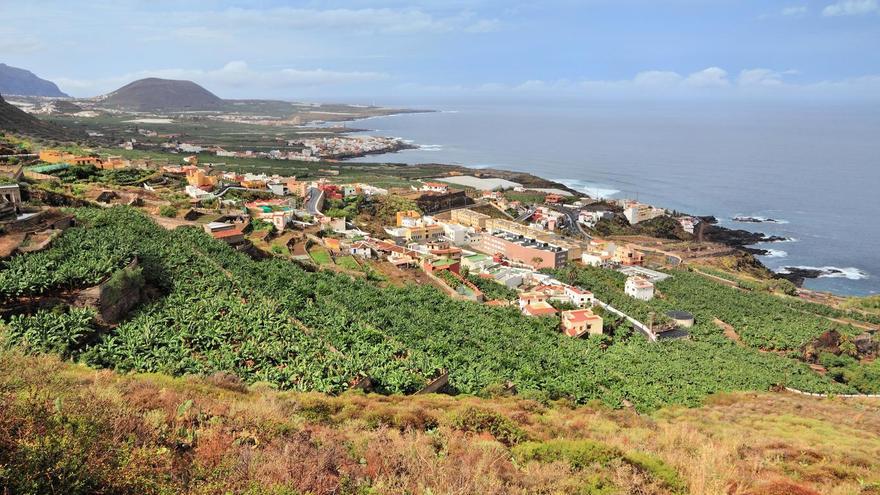
In the north-westernmost part of Tenerife, Buenavista del Norte unfolds between the blue of the Atlantic Ocean and the slopes of the Teno massif. Its historic centre, laid out in the 16th century, retains cobblestone streets and grand houses with wooden balconies.
Its agricultural identity now blends with a laid-back tourism, a balance between tradition and nature that has turned Buenavista into one of the most genuine and photogenic enclaves of the island.
With only 4,692 inhabitants (INE 2024), Buenavista del Norte ranks fourth from the bottom in the Tenerife census. Only Vilaflor, El Tanque and Fasnia have lower populations.
However, its financial situation tells a different story: according to the Ministry of Finance (via DatosMacro), the Town Hall closed 2024 with 1.69 million euros in outstanding debt, which translates to 362 euros per resident.
Among the 31 municipalities on the island, only the capital, Santa Cruz de Tenerife, bears a higher per capita debt (457 euros/resident).
Various Projects
Buenavista del Norte is currently engaged in four projects that the municipality has decided to co-finance within just two years.
First is the complete renovation of the Punta de Teno lighthouse, the historic coastal site whose conversion into a visitor centre and café began a few months ago with a budget of 1.6 million euros funded through the Recovery-Next Generation Plan.
The project is led by the Cabildo, but the Town Hall contributes to the external landscaping and construction supplies, for which it has taken out a soft loan that is now part of the outstanding debt. This bridge loan raises the temporary debt until the European funds are resolved.
To this amount, 106,155 euros must be added, which the municipality must advance, awaiting European reimbursement, for the so-called “tourist-urban package”, which includes the renewal of the children’s playground in the General Eulate square (41,461 euros), the enclosing of the patio at the Casa Matula (17,223 euros), and the installation of bollards at the pedestrian access points to the plaza de Los Remedios (44,471 euros).
Further Improvements
Sport adds another dimension: the replacement of the flooring and the enclosure of the San Francisco Sports Centre, valued at 262,684 euros as part of the Island Sports Infrastructure Plan. The Cabildo bears the bulk of the cost, but the Town Hall pays for the project preparation and 10% of the work, which has also been financed through a bank loan.
Finally, the restoration of the old Convent of San Francisco, declared a Cultural Asset of Interest, mobilises 300,654 euros from the Island Historical Heritage Programme. The Cabildo covers 90%, while the municipality contributes 10%, a contribution that adds to its liabilities as it will be paid in instalments over the four years the project will take.
Today, Buenavista’s finances are within legal limits, but any delay in European grants or a drop in tourism could strain the municipal treasury.
Narrow Fiscal Base
These operations explain why a municipality of fewer than five thousand residents and a municipal budget of barely 5 million euros per year carries the second highest per capita debt in Tenerife.
But this is not the only reason. The local economy depends on subtropical agriculture (bananas, avocados) and rural tourism.
Tourist Destination
Founded in 1510, Buenavista del Norte has a historic centre of terraced houses and cobbled streets. The municipality attracts travellers seeking the rugged nature of the Teno Rural Park, with its cliffs, laurel forests, and scenic trails like Los Gigantes.
Adding to these attractions is the Punta de Teno, where the lighthouse, currently undergoing rehabilitation, will house a visitor centre and café with ocean views.
The success of the municipality depends on turning debt into future investment, attracting more visitors to pay off loans thanks to an increased tourist presence generating more commercial activity.
For all these reasons, Buenavista del Norte embodies the paradox of many small tourist municipalities: few people, great aspirations. The rehabilitation of the lighthouse and urban improvements could either boost the local economy or increase the financial burden if returns do not come in time.
Meanwhile, the municipality maintains its dual identity: a rural retreat in the north-west of the island, and at the same time, one of the most indebted council areas per capita in all of Tenerife.















